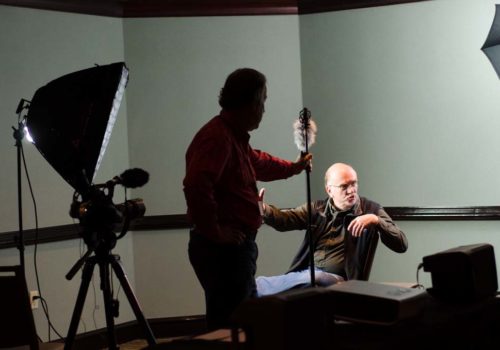Who wants to be a photojournalist these days? Newspapers are struggling to survive and have drastically reduced their staff; news wire services and magazines’ long-term assignments have become things of the past. Yet images are everywhere, more than ever. In this brave new world “where everybody is a photographer”, how do photojournalists can possibly survive?
Walking the aisles of the Photojournalism Seminar in Atlanta and listening to their series of speakers as I did last week would give anybody a good boost of optimism and forget the doomed reality. No, the profession is not dying and yes, we are problem solvers by nature, so we will be just fine. The need for interesting, well-crafted visuals content is stronger than ever.
Flashback forty years ago, the glamorous age of photojournalism. In 1972, a group of photojournalists from Atlanta decided to promote their profession and created an educational seminar. The Atlanta Photojournalism Seminar (APS) was born, attracting year after year a relatively small but loyal audience, and renowned photographers in the kind of W. Eugene Smith or Jay Maisel. In 2012, the seminar is still run by a dedicated pool of volunteers, and operates in the same spirit as in the early days. As long-time board member Ken Hawkins says, “It is just a labor of love.”
Interestingly, the program included this year for the first time a full day dedicated to video presentations, a move which reflects the growing trend towards multimedia in the photojournalism world. As two-time Pulitzer price winner Michael Williamson of the Washington Post noted with humor, “When I started, I was called a picture taker, then I became a photojournalist and now I am a multimedia storyteller.”
Photojournalists are reinventing themselves, they are becoming “hybrid journalists”, as NPR David Gilkey put it. Ditto Jim Lo Scalzo, who, before joining the European Press Agency (EPA), worked at US News & World Report for 16 years. Photojournalists, he noted, need to fight hard to find their places in the news department, where content is king, and not in the art department. “There is a long-living stereotype that photographers are illustrators, not reporters, “ he said. Yet in the digital age, more and more media organizations recognized the need for strong, dynamic visuals to animate their online presence. Photographer Keith Jenkins, for example, was hired by National Public Radio (NPR), two years ago to revamp the look of their website. In the process, no photojournalists were hired; instead NPR trained their own audio reporters to become photographers. Atlanta-headquartered CNN has also jumped in, starting a year ago to show the work of photographers on their website and blogging regularly on issues related to photography.
So if the future of photojournalism is not seemingly bright, there is for sure a technology-driven transformation that is taking place, which will be interesting to follow in the coming years.
Virginie Drujon-Kippelen
















